Turnergang
New Member
- Joined
- Jul 25, 2021
- Messages
- 15
Ya it’s been 11.5v at least twice. I’ll be junking them soon.On a FLA/SLA battery, I wouldn't even go down to 50% SOC. My golden rule for those chemistries is 12.2V at rest is dead enough lol.
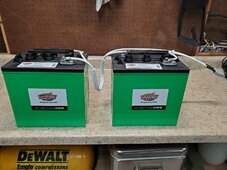
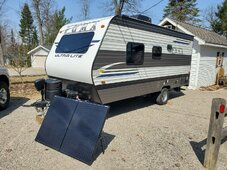
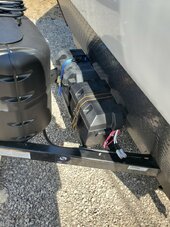
Ya it’s been 11.5v at least twice. I’ll be junking them soon.
Great info. Thank you. That’s kinda what I’m thinking to start with.I did an inexpensive upgrade to a camper a few years ago. Golf cart 6V's will fit in the boxes and I did an Anderson connector for a portable solar panel setup (200watt) - under $500 all in
The owner camped off grid full time an entire summer like this. (No air conditioning)
Golf cart batteries are available everywhere and be cycled heavy. Good "beginner" batteries to learn on and screw up a few times without spending too much.
I absolutely agree. When I do 'back-yard' builds for testing, I always use a small AGM battery over a LiFePO4. In case something should go wrong, a FLA/SLA will be a lot more forgiving and cheaper to replace. I call these 'learner batteries'. They are also good to have around in case a LiFePO4 needs to be 'jump started' from over discharge.Good "beginner" batteries to learn on and screw up a few times without spending too much
The number of charge cycles for L/A (well all batteries actually) increases the shallower the discharge- L/A is about 800-1200 at 50% DOD, about 1500-2000 for 25% DOD, and about 2500-3000 at 10% DOD (but then you functionally only have a battery bank capacity 1/10th of the 'label' capacity...)On a FLA/SLA battery, I wouldn't even go down to 50% SOC. My golden rule for those chemistries is 12.2V at rest is dead enough lol.
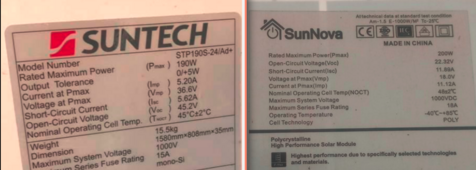
Well yes, LFP is great BUT..... most budget LFP can't be put in a wet environment like the existing plastic box out on the hitch. So you might be building a new weather tight box or taking up storage inside. If moving inside, now you're rewiring battery cable. Then you need to consider the factory charger/converter, most have really high constant charge voltages, not a multi stage charge algorithm.The number of charge cycles for L/A (well all batteries actually) increases the shallower the discharge- L/A is about 800-1200 at 50% DOD, about 1500-2000 for 25% DOD, and about 2500-3000 at 10% DOD (but then you functionally only have a battery bank capacity 1/10th of the 'label' capacity...)
That's why LFP makes better economic sense- yes they cost about twice the price of L/A, but because they can handle an 80% DOD and still get 5000 charge cycles, reduce it to 70% DOD and you are looking at 7000 cycles- you pay twice as much initially, but get 30% more actual capacity, and 800-1200 cycles against 5000... reduce both down and you get 7 times more actual capacity, and twice the number of cycles (3000 against 7000)
Plus for mobile use like campers- they are far smaller, and a lot lighter- important in a camper...
Price of L/A batteries these days- I wouldn't be leaving them in a plastic box on the drawbar anyway lolWell yes, LFP is great BUT..... most budget LFP can't be put in a wet environment like the existing plastic box out on the hitch. So you might be building a new weather tight box or taking up storage inside. If moving inside, now you're rewiring battery cable. Then you need to consider the factory charger/converter, most have really high constant charge voltages, not a multi stage charge algorithm.
So, its not a simple one for one battery swap in many cases.
While I agree with your post on the differing voc, both of my 175 watt Renogys run very well on my PWMs. If your panels are identical, I can't think of any reaosn why a PWM would not work (it's been powering my life for 4 years)... but if you mis-match your panels, you WILL find you aren't utilizing the full potentials of your panels.See why a PWM really is a bad choice???
As I said- it depends entirely on the Voc of the panel concerned- they vary hugely...While I agree with your post on the differing voc, both of my 175 watt Renogys run very well on my PWMs. If your panels are identical, I can't think of any reaosn why a PWM would not work (it's been powering my life for 4 years)... but if you mis-match your panels, you WILL find you aren't utilizing the full potentials of your panels.
For me, I am wasting a few watts, I'll admit that my Renogy panels despite being the same wattage and models are different in size and voc, but its not insanely noticeable where I would need to switch over to MPPT. And if I felt those missing watts (maybe 5 or 6) would be needed, I have 10 more PWM controllers of the same kind. It all depends on what your needs and situation requires; a Victron was not satisfactory enough for mine.
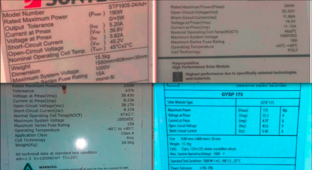

This article from victron is a great read, they produce both types pwm and mppt. You really cant make a generalization of "30% less".Another thing to look at is your charge controller- ye old fashioned PWM will make 30% less total power generated per day than a MPPT- and thats with well matched panels, buying the wrong panels (say ones with a 44v Voc) will see the output plummet on a PWM- that combination on a 12v battery bank could see your panels making less than HALF their rated power!!! (panel wattage gives no clue to the Voc, they can be anything from 18v Voc to up over 70v Voc...)
eg these two are only 10w difference, yet look at the difference in the Voc ratings!!!
View attachment 196602
Put the 200w on a PWM on a 12v battery, and it will make about 150w under STC, put the 190w one on a PWM on 12v and it's output is a tiny 70W- from a 190w panel!!!
Put either on a MPPT charge controller and they will make their rated output to within a 1/10th of a watt in STC conditions (thats them up the top right- 25C cell temps on the panel, 1000w/m^2 and 1.5 atmospheric mass (ie this varies according to your latitude (further from the equator it increases, higher up in altitude it decreases...)
See why a PWM really is a bad choice???


